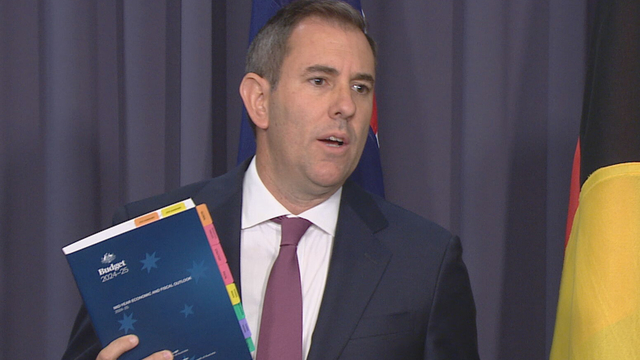
Australia, known for its vast natural resources and mining sector, is facing significant economic challenges. The country is grappling with a budget deficit that has reached a staggering $21.8 billion. A primary factor contributing to this fiscal gap is the downturn in mining revenue, which has historically been a major driver of Australia’s economy. As a result, the government is now navigating the complexities of managing its finances amidst a fluctuating global market.
The Role of Mining in Australia’s Economy
Australia’s mining industry has long been one of the cornerstones of its economic growth. The country is rich in resources, including coal, iron ore, and natural gas, which have fueled exports and contributed to national wealth. Mining accounts for a significant portion of the nation’s GDP and is a major source of employment and investment.
However, global demand for some of Australia’s key mining exports has begun to wane, leading to reduced revenues from the sector. A combination of factors, including changes in global commodity prices, increased competition from other mining nations, and a shift toward greener energy alternatives, has resulted in a decline in mining output and profits.
This drop in mining revenue is having a profound effect on Australia’s financial situation, particularly as the government faces pressures from other sectors such as healthcare, education, and defense. The falling mining revenue has made it more difficult to balance the budget, and the country is now staring down a deficit that continues to widen.
The Budget Deficit Crisis
The Australian government has announced a projected budget deficit of $21.8 billion for the current fiscal year, which is a sharp increase compared to previous estimates. This deficit poses serious challenges for the nation’s fiscal health, as the government must find ways to address the shortfall while continuing to provide services to its citizens.
The budget deficit is a result of a combination of factors, but falling mining revenue is one of the most significant contributors. As a major source of income for the government, any decline in mining profits directly affects tax revenues and complicates efforts to fund essential public services.
With the country already facing a range of economic pressures, including rising inflation and a growing demand for social welfare programs, the budget deficit is further exacerbating the situation. The Australian government has been forced to borrow more money to cover the gap, which in turn increases the nation’s debt levels and raises concerns about long-term fiscal sustainability.
The Global Impact of Falling Mining Revenue
The decline in Australia’s mining revenue is not just an internal issue; it has broader implications for the global market. As one of the world’s largest exporters of coal and iron ore, Australia plays a crucial role in global supply chains. A reduction in Australia’s mining output could affect international prices and disrupt global trade, particularly with countries like China, which relies heavily on Australian resources.
The impact of falling mining revenues is also felt in local communities. In mining regions across Australia, job losses and reduced economic activity are becoming more prevalent. Many towns that rely on the mining industry for employment and economic stability are now facing uncertainty, with fewer opportunities for residents and businesses.
Additionally, the reduced revenue from mining has implications for foreign investment in Australia. Global investors closely monitor the health of Australia’s primary industries, and any sign of instability in the mining sector may lead to decreased investment in the country. This, in turn, could affect other industries, including infrastructure, manufacturing, and technology.
Government Response and Potential Solutions
In response to the budget deficit and the decline in mining revenue, the Australian government has started to explore various solutions. One of the key approaches is diversification—shifting focus away from mining and toward other sectors of the economy, such as technology, renewable energy, and agriculture. By diversifying its economic base, Australia can reduce its reliance on mining and mitigate the impact of global fluctuations in commodity prices.
The government has also started to look at ways to reform its tax system and increase revenues from other sources. There has been a push to implement more progressive taxation measures, particularly for the wealthiest Australians and large corporations. These measures could provide a much-needed boost to government coffers while reducing the burden on middle- and low-income families.
Moreover, the government is focusing on boosting exports of non-mining goods, especially in the technology and clean energy sectors. The rise of green energy technologies presents an opportunity for Australia to position itself as a global leader in renewable energy, which could offset some of the losses from the mining sector.
Looking Ahead: What Does the Future Hold?
The road ahead for Australia is uncertain. While the government is taking steps to address the budget deficit, the decline in mining revenue is likely to continue impacting the country’s finances for the foreseeable future. The global transition to renewable energy, changes in global demand for Australian resources, and fluctuating commodity prices all present challenges that Australia must navigate.
However, there is hope that through diversification, economic reform, and a shift toward sustainable industries, Australia can weather this storm. The government’s ability to balance the budget, stimulate new sectors, and respond to global economic shifts will be critical in determining the country’s future economic stability.
In conclusion, Australia’s $21.8 billion budget deficit highlights the vulnerabilities of a resource-dependent economy. The decline in mining revenue has created a challenging fiscal environment, but with strategic planning and a focus on diversification, the country can adapt and find new avenues for growth. While the future is uncertain, Australia’s resilience and adaptability will be key to overcoming the current economic hurdles.





